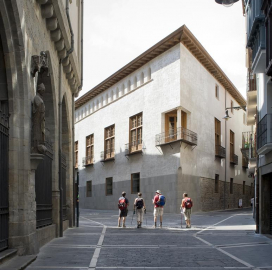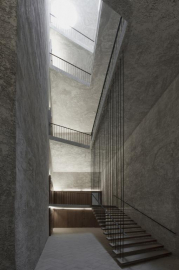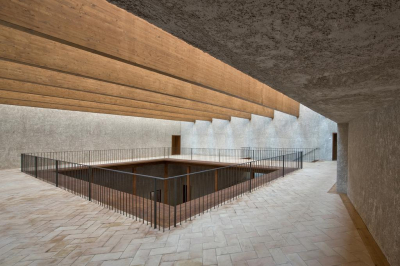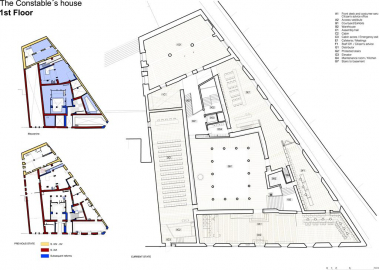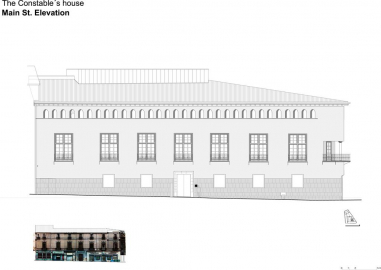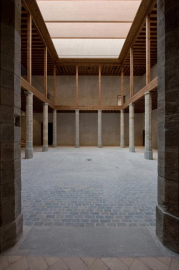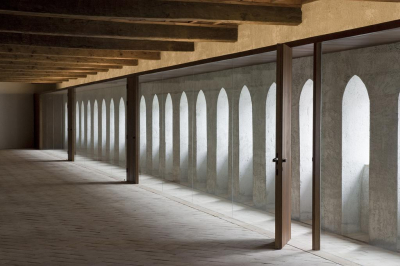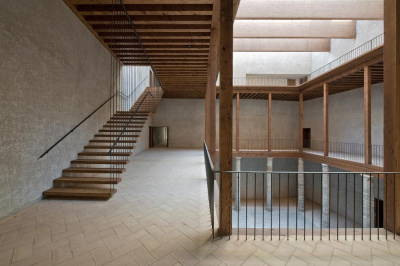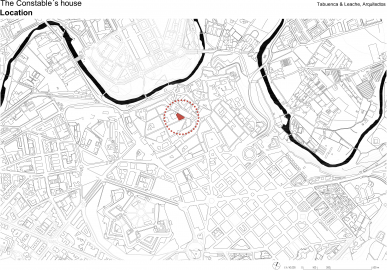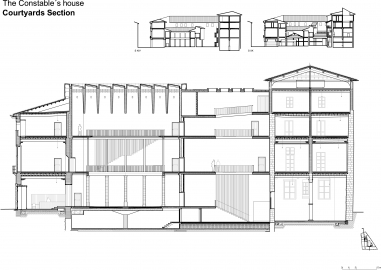Rehabilitation of the Constable's House.
The Constable s house, two aims:
1. The restoration and consolidation of the16th Century palace, under a policy of recovery and appreciation of the inherited cultural heritage.
2. Its use as a civic centre within Pamplona s old quarter, so as to provide its neighbours new resources and equipment, contributing to the historical district be revitalized.
The 16th Century building lies at the entry point of the Way of Saint James into historical Pamplona. It suffered a series of major reforms throughout the 19th and 20th Centuries in order to fit rental dwellings, commercial spaces and workshops, making the original traces barely recognizable. In a state of ruin, the building was purchased by the Town Council in the year 2000 in order to prevent its demolition. A competition for its restoration was called.
Based upon archaeological and documental scientific research, the project chooses to recover as much as possible from the original Renaissance house-palace character.
Today, it is used as a civic centre. It has been declared BIC (Cultural Interest Building).
Site Conditions
The 16th century building, on the Camino de Santiago, suffered a series of major reforms throughout the 19th and 20th centuries in order to fit out rental dwellings, commercial spaces and workshops, so the original traces were barely recognizable. In a state of ruin, the building was purchased by town council in the year 2000 to prevent its demolition and convert it into the civic center of the historical district.
Design concepts
Based upon archaeological and documental scientific research, the project chooses to recover as much as possible of the original Renaissance house-palace character, assigning new uses to the more adequate spaces available.
The emptying and reconstruction of the courtyards at the heart of the building enables to organize the structure, circulations and serving spaces. Introducing a building inside another, the new one brings life to the old one.
New interventions are easily recognizable. However, they do not seek contrast but a natural continuity with the existing, in a
sensitive attitude through the Renaissance house spirit.
Materials
The materials used serve to establish a connection between past and present, with exposed surfaces made of local stone, fired clay, wood, limestone and plaster. This does not exclude, however, the use of modern building techniques and reinforcement materials such as the concrete used for the buildings foundations and new central core that strengthens the internal walls and supports the skylight and the new loads.
The facade walls are tied to this core through metallic braces concealed inside the wooden roofs. To increase their esistance, the depth of the roof beams is increased with one-way laminated wood and pine wood connectors.
By extending the height of the core, the roof rafters rest directly over it with one-slope flaps onto the street that clear up the geometry of the perimeter tile roof.
Sustainable aspects
The reuse of old buildings and historical heritage recovery is in itself a good example of sustainable architectural practice.
Old thick walls made of brick and stone and the ventilated space under the tile roof guarantee a passive protection of high thermal inertia.
The northern bearing courtyard skylights, practicable for night cooling, are screened by the large wooden beams.
Considering the great height of ceilings, the installation of radiating low temperature floors for winter heating and summer
refreshment is highly practical in terms of energy savings. Air renovation is done by means of hidden ducts, taking advantage of the old chimneys and the plenums between the pavement and wood ceiling. Only the assembly and dancing halls and the main courtyard are equipped with a full air conditioning system, not necessary in the rest of the areas.

